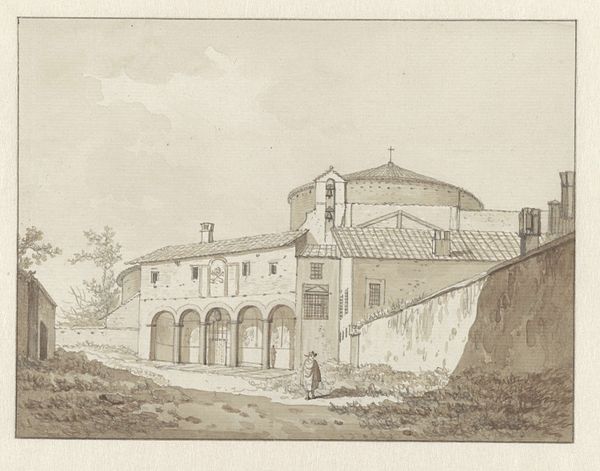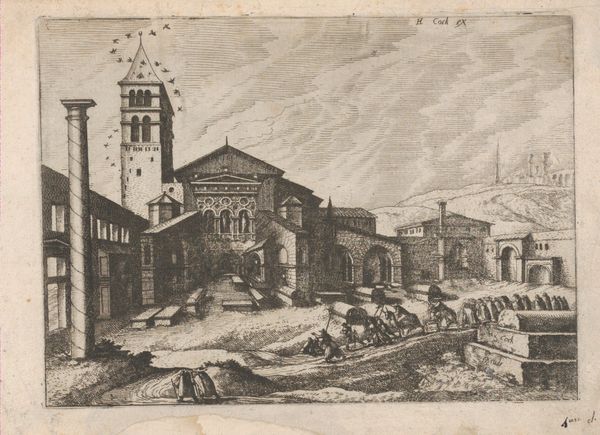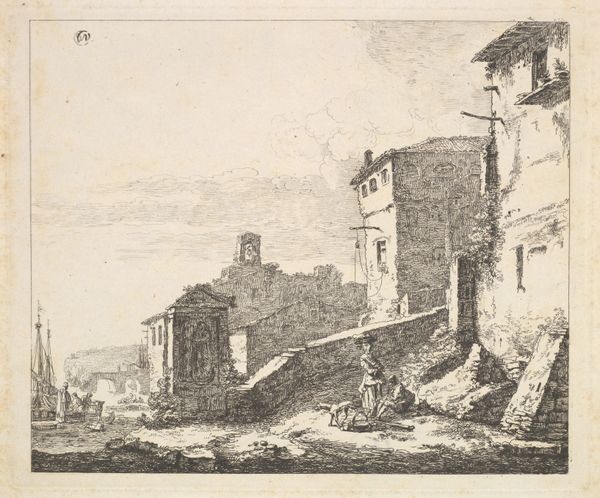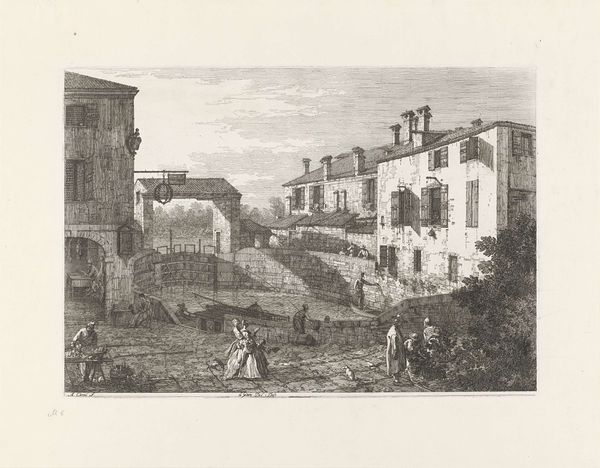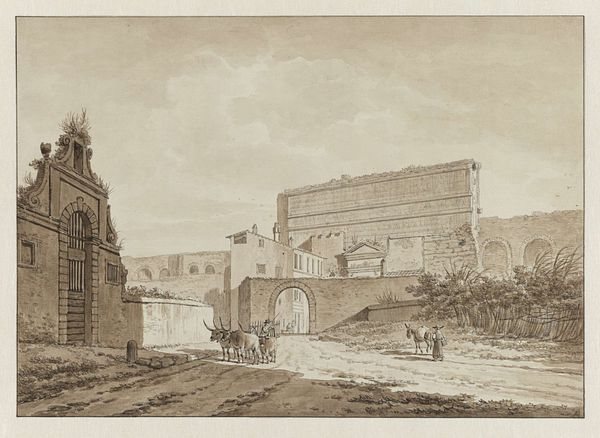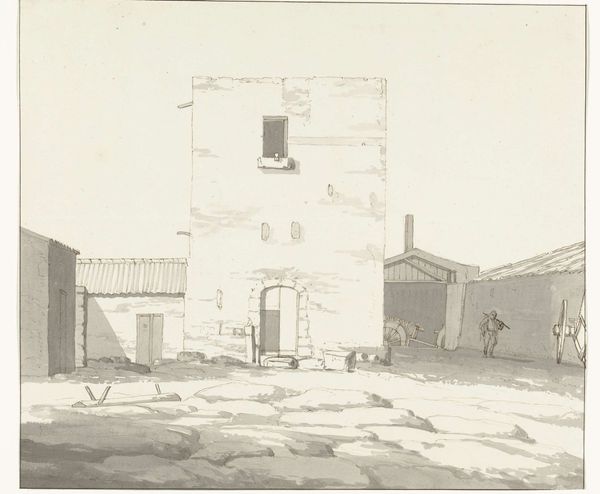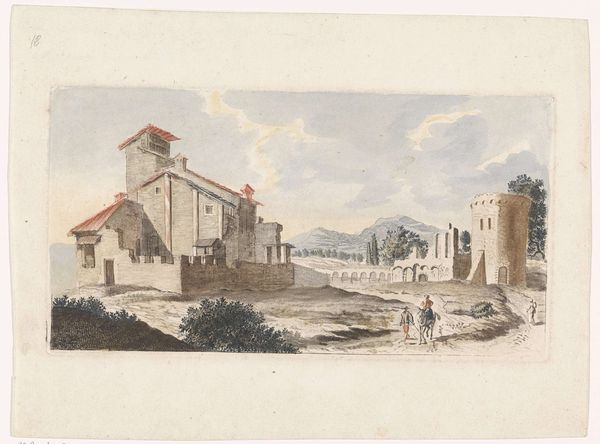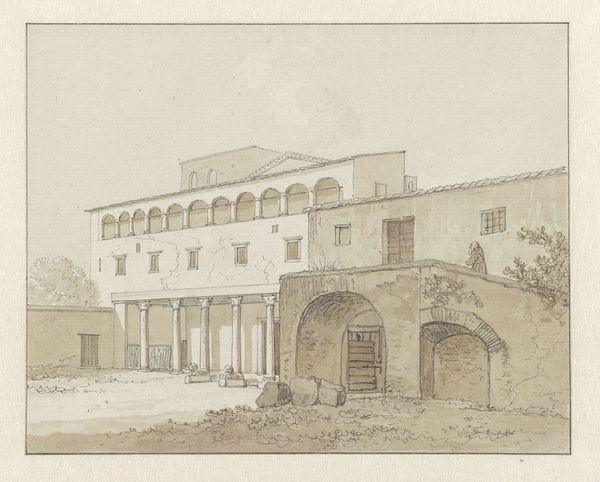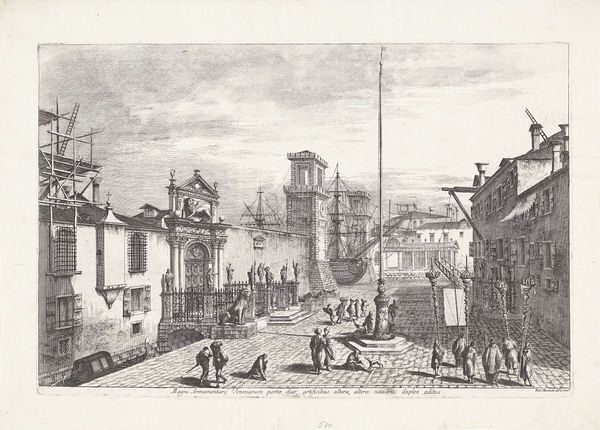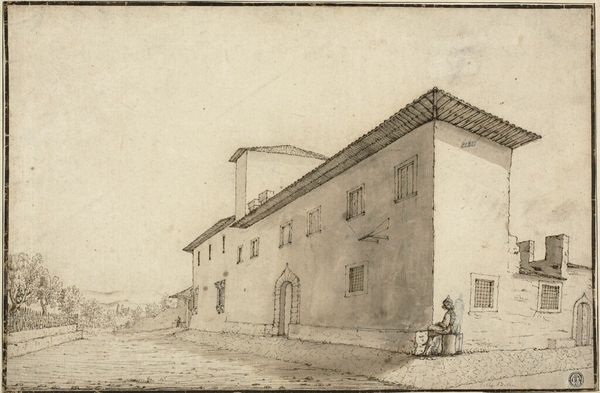
drawing, print, etching, paper, engraving, architecture
#
drawing
#
neoclacissism
# print
#
etching
#
landscape
#
classical-realism
#
etching
#
paper
#
form
#
line
#
cityscape
#
engraving
#
architecture
Dimensions: height 251 mm, width 320 mm
Copyright: Rijks Museum: Open Domain
Editor: This is "Tempel te Rome" by Hermanus Fock, created sometime between 1781 and 1810. It's an etching or engraving on paper. I’m really struck by how the stark lines and the architectural focus make the city feel so…still and monumental. What catches your eye? Curator: It’s interesting you say monumental, because it is precisely the visual rhetoric of monumentality and timelessness that's being deployed here. Neoclassicism, the artistic movement it is tied to, was very interested in classical virtues and, by extension, their visual representation. Think about the context: this was made in the late 18th century, with the French Revolution looming. How might idealized visions of past empires be viewed at that moment in time? Editor: I guess it's trying to project an idea of order and stability, something permanent when everything was starting to shift? Were these images widely accessible? Curator: Precisely. And yes, prints like these had a crucial role in disseminating those ideals. They were relatively affordable and portable, making them accessible to a wider audience beyond the aristocracy. How do you think such wide accessibility may affect the message it tried to convey? Editor: If more people saw images promoting stability and order, wouldn't that help normalize the existing structures of power or even suggest a need to restore previous regimes, maybe like the Roman Empire? Curator: Absolutely! You're highlighting the crucial relationship between art, power, and public perception. Works like this don't exist in a vacuum, they actively participate in the construction of social and political ideologies. Anything else jump out at you? Editor: I'm really seeing how even what feels like a simple landscape can be so deeply tied to political ideas! Thanks. Curator: Indeed! It underscores that art serves a public role, constantly shaping how we perceive our world and history. Thank you for your perspectives.
Comments
No comments
Be the first to comment and join the conversation on the ultimate creative platform.

